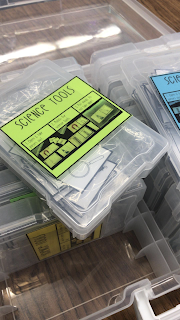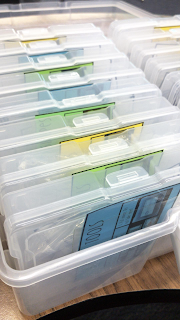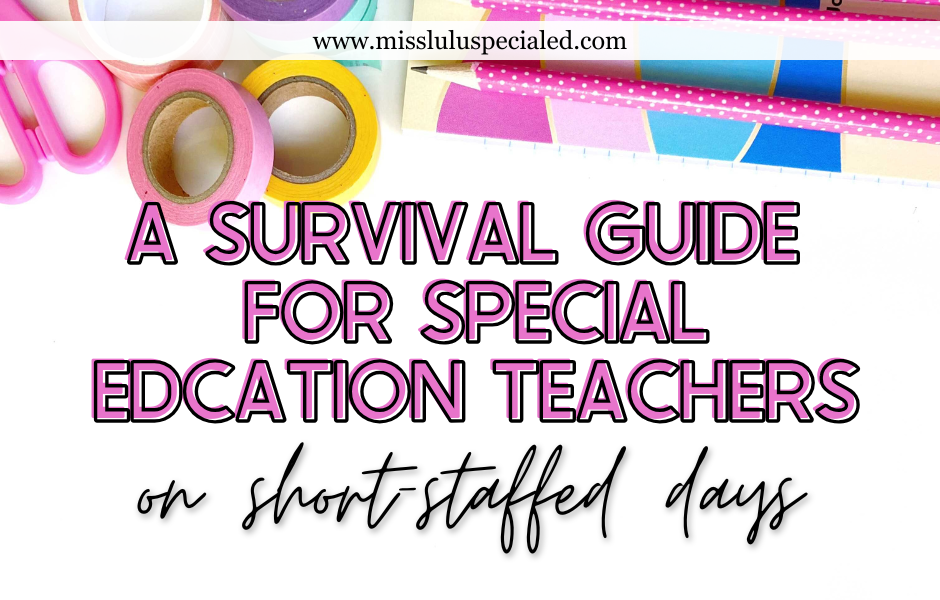INCREASING INDEPENDENCE WITH WORK TASKS
- Laura

- Dec 19, 2022
- 3 min read
Whenever I am called to help a teacher with a specific student or classroom management in general, one of my first questions is, "What can the student(s) do independently?"
Why does this matter? Well, our number one goal as special education teachers is to increase student independence. We do this by explicitly teaching skills that our students need to increase access to the general education classroom and the community.
Students with disabilities have so much potential, but too often and to no fault of their own, they are prompt-dependent and struggle with independent skills. With so many paraprofessionals and modifications built into our classrooms, sometimes we don't realize that we are doing students a disservice with our intensive support.
So, how do we help our students increase their independence? One of the main strategies in my classroom was teaching students to work independently using work tasks.

What are Work Tasks?
Independent work tasks are what they sound like. Tasks that students can complete independently. Here's the key- these are skills that students have mastered. This is important because we need to ensure that we are not prompting or correcting, or it's not really independent, is it?
There are many benefits to using independent work tasks, but I’ll dive into a few. First and foremost, our students need to learn independence. It’s essential for growth, challenging skills, and decreasing prompt dependency.
Independent work tasks also give students the space to review previous skills and increase their confidence. Plus, since you have a student working independently, you can free up a paraprofessional and get extra help with other classroom tasks.
How do I get started using Work Tasks?
Instead of having every student work on centers or independent work at one time, select one or two students to complete independent work. Start by setting a timer for 5-10 minutes, and slowly increase the amount of time students spend working. You may have students that need to start with an adult next to them, but make sure to slowly fade the adult out as the student increases their ability to work independently. This can be as easy as moving the chair further away from the student. It's also important to set clear expectations for how independent work functions. Students should have a location to place the task when they are finished. It's also important NOT to reset the work in front of the student because it devalues their effort. To get started, identify which students you have that can work the most independently. Select the level of work tasks that you want them to use and prep them. Here are my must-have prep supplies.
How often should I change out Work Tasks?
I have done this in different ways, depending on the year.
First, I change all the tasks out monthly. I store them in a large bin and transfer them to the task card cases when I put them out each month to save space.

Some years, I just had students grab any task from the shelf that was an appropriate level for them.
Other years, I used plastic shoe boxes and placed 4-5 tasks for the week inside. Students would grab their boxes and do the same tasks for the week, and then we would switch them out for the next week.
Another option that I have used is a visual schedule of tasks, like I shared in this post.
How you incorporate work tasks into your schedule will depend on what works for you and your students.
How do I store Work Tasks?
I love to use photo boxes and pencil pouches to store work tasks. You can also buy mesh zipper pouches in different sizes, which also works great.
I was able to snag this bookshelf from the librarian for free, and I kept all of my work tasks for the month on it sorted by level.

Inside each box or pouch, I placed the cards and a small baggie that contained the pieces. I didn't want students to waste time separating the pieces from the cards, so this was a good system for us.
If you're ready to get started with work tasks, I have a free sample for you!

























This article highlights the importance of building student independence through well-structured work tasks. By starting small, setting clear expectations, and storing materials in practical options like photo boxes, teachers can boost confidence and reduce prompt dependence. Just as in education, thoughtful organization like using custom candle boxes wholesale can balance function with lasting appeal